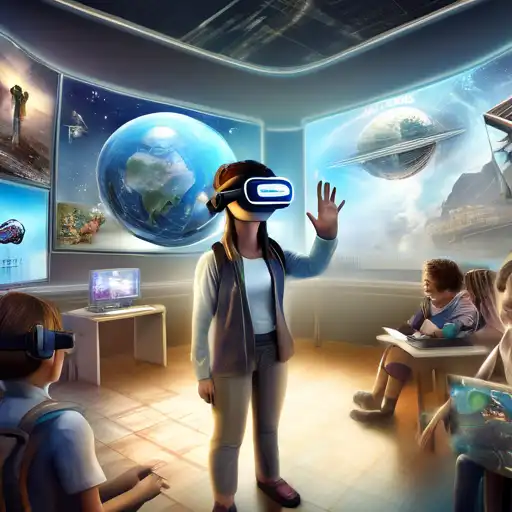Introduction to Virtual Reality in Education
Virtual Reality (VR) is rapidly transforming the educational landscape, offering immersive learning experiences that were once the stuff of science fiction. By simulating real-world environments, VR enables students to explore complex concepts in a hands-on manner, making learning both engaging and effective.
The Benefits of VR in Educational Settings
VR technology offers numerous advantages for both students and educators. Here are some key benefits:
- Enhanced Engagement: VR captivates students' attention like no other medium, making learning more interactive and fun.
- Improved Retention: Immersive experiences help students retain information longer by engaging multiple senses.
- Accessible Learning: VR can bring distant or inaccessible locations right into the classroom, from ancient ruins to outer space.
- Safe Practice Environment: Students can practice skills in a risk-free setting, such as medical procedures or mechanical repairs.
Implementing VR in Schools and Universities
Adopting VR technology in educational institutions requires careful planning and investment. Schools and universities must consider the following steps:
- Assessing the educational needs and objectives that VR can address.
- Investing in the necessary hardware and software, including VR headsets and educational content.
- Training educators to effectively integrate VR into their teaching methodologies.
- Evaluating the impact of VR on student learning outcomes to ensure it meets educational goals.
Challenges and Considerations
While VR holds great promise, there are challenges to its widespread adoption in education:
- Cost: The initial investment in VR technology can be prohibitive for some institutions.
- Technical Limitations: Issues such as motion sickness and the need for high-performance computing can hinder the VR experience.
- Content Availability: There is a growing need for high-quality, curriculum-aligned VR content.
The Future of VR in Education
As technology advances, VR is set to become an integral part of the educational ecosystem. Future developments may include more affordable VR solutions, enhanced interactivity, and personalized learning experiences tailored to individual student needs.
For more insights into innovative educational technologies, explore our EdTech Trends section.
Conclusion
Virtual Reality is redefining the boundaries of education, offering unprecedented opportunities for immersive learning. By overcoming current challenges and leveraging its full potential, VR can significantly enhance educational outcomes and prepare students for the future.
